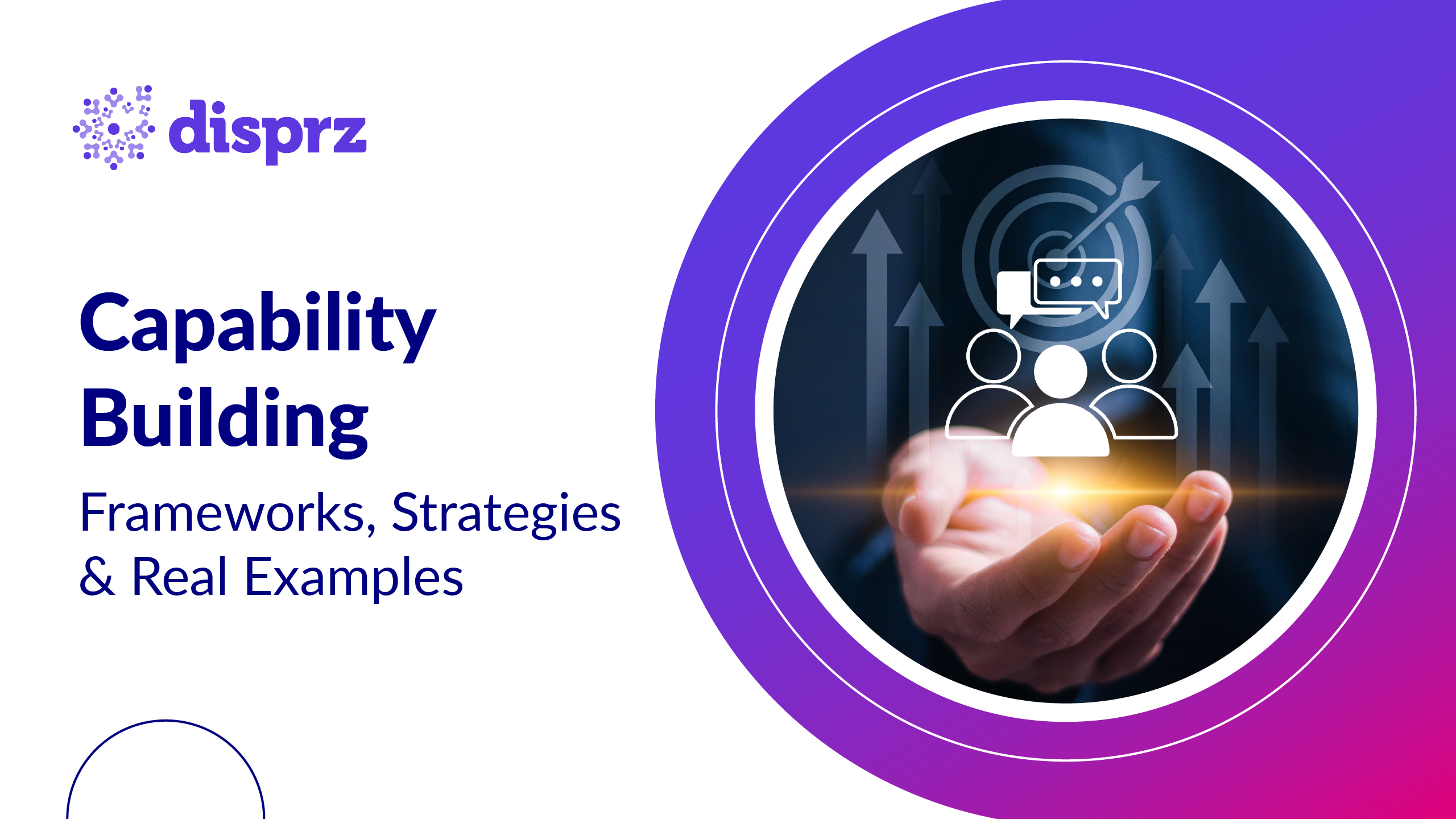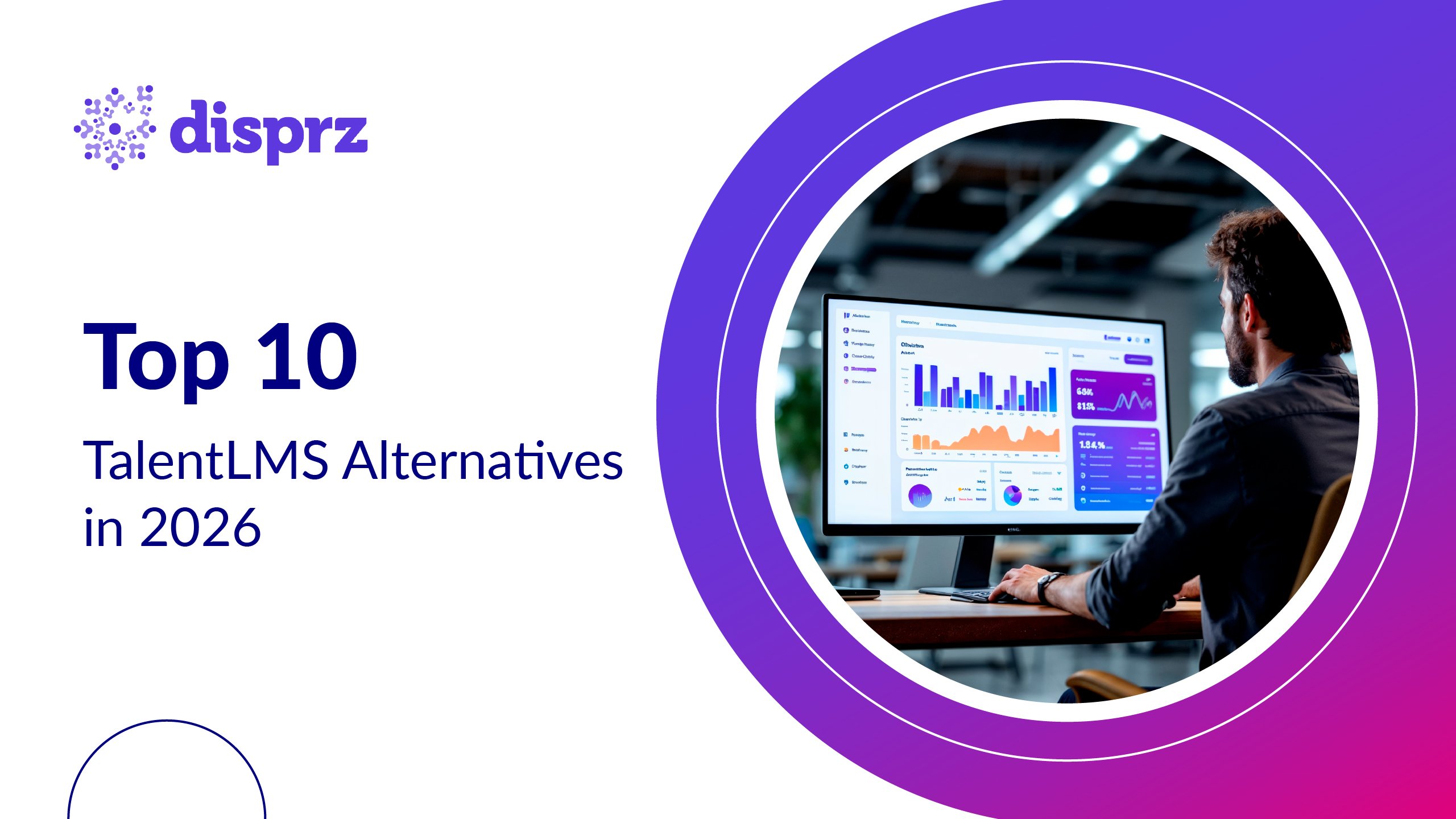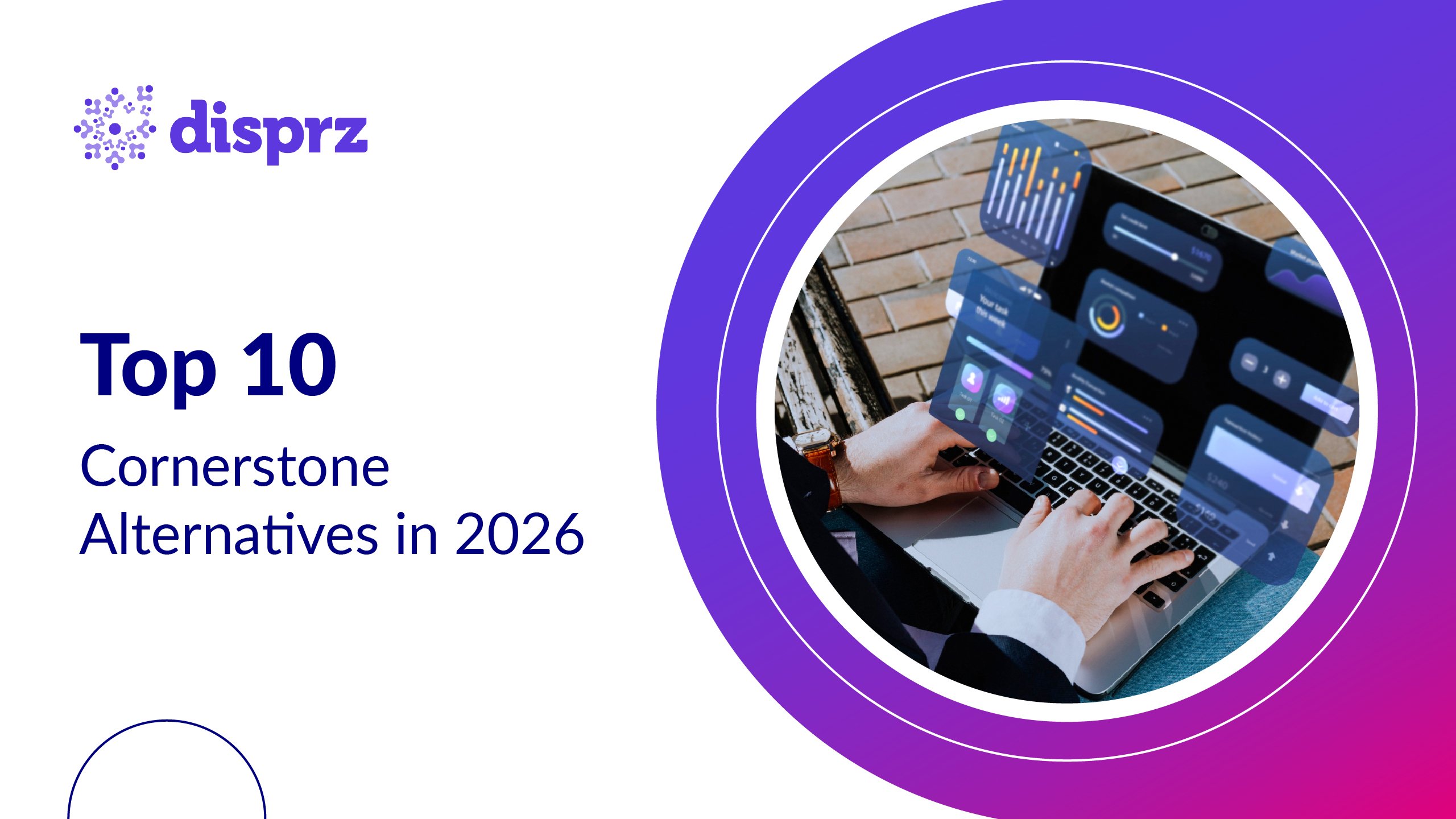The rise of AI has transformed not just how we work, but also how organizations hire. Organizations are shifting away from traditional degree-based recruitment toward skill and competency-based hiring, where performance and adaptability take precedence over qualifications. This shift makes capability building more critical than ever in 2025 and the year ahead.
As business needs evolve, many organizations are also slowing down external hiring to focus on capability building through reskilling and upskilling, to improve workforce mobility and succession planning. The aim is to strengthen internal talent pipelines and future-proof the workforce. Therefore, capability building will remain one of the defining trends in 2026.
Here we’ll explore what capability building truly means, the core frameworks, strategies, and real-world examples organizations can use to create a skilled, agile, and future-ready workforce.
What is Capability Building?
Capability building, also referred to as capability development, is the process of developing and enhancing the skills, knowledge, and abilities of individuals or organizations. These enhancements allow your workforce to effectively perform tasks, achieve objectives, and adapt to changing circumstances.
Capability building involves the acquisition of new competencies, the improvement of existing skills, and the cultivation of a mindset that embraces continuous learning and improvement. It encompasses various training programs and knowledge acquisition methods to foster employee skills and organizational capabilities. However, many organizations interchangeably use competency and capability. Let’s understand what makes capability different from competency.
Capability vs. Competency: What’s the Difference?
| Aspect | Competency | Capability |
|---|---|---|
| Definition | The specific knowledge or skill needed to perform a task. | The broader ability to use those skills effectively in different, changing situations. |
| Focus | Doing a defined job well. | Adapting, solving problems, and improving in new contexts. |
| Example | A data analyst’s competency may be in Excel or SQL. | Their capability lies in using data to generate business insights and inform decisions. |
In short, competency is what you know; capability is how you use it when things change.
Why Capability Building Matters in 2026
Capability development empowers individuals to enhance skills, fostering career growth and organizational success through a skilled, adaptable workforce.
Drives Productivity and Business Performance
Capability building equips employees with the right skills to perform effectively in evolving roles. According to Deloitte, organizations that invest in continuous skill development are 49% more likely to improve processes to maximize workforce efficiency and improve customer satisfaction scores. When employees know how to apply new skills, business outcomes improve, efficiency rises, errors reduce, and teams operate with greater confidence.
Enables Faster Innovation
An adaptive workforce is an innovative one. When employees are empowered with the right capabilities, such as critical thinking, digital fluency, and cross-functional problem-solving, they’re better positioned to spot opportunities and design new solutions. This effect is amplified by AI. Organizations that leverage AI see measurable advances in both workforce capabilities and overall innovative output. No wonder that over the next three years, 92 percent of organizations plan to increase their AI investments, recognizing that combining human skills with AI accelerates innovation at scale.
Attracts and Retains Top Talent
Today’s workforce values growth over tenure. Organizations that offer structured upskilling and internal mobility pathways retain top talent longer. According to LinkedIn's 2024 Workplace Learning Report, organizations with high internal mobility rates see 53% longer employee tenures compared to those with low internal mobility. Capability building signals commitment to employee development, creating a culture where people see a future for themselves inside the organization, not outside it.
Strengthens Succession and Leadership Pipelines
Building internal capabilities helps identify potential leaders early and prepare them for critical roles. Instead of hiring externally, organizations can develop leaders from within, which helps save costs, maintain cultural continuity, and improve leadership readiness. It’s no surprise that Gartner ranks leadership and manager development as the top priority for 2025 and 2026.
Aligns Employees with Strategic Goals
When capability development is tied to business strategy, employees can see how their learning translates into impact. Linking skill-building to organizational goals creates alignment, and every role, project, and capability feeds into shared outcomes. The strategic connection that gets established due to capability-building training helps organizations execute faster and maintain agility even during market shifts.
Proven Capability Building Strategies for 2026
In 2026, building capability in the workplace demands both leadership intent and scalable, tech-enabled design.

Here are 6 proven strategies organizations can use to embed continuous learning and adaptability into their culture.
1) Model from the Top Down
Transformation starts with leadership. When senior leaders actively participate in capability-building programs or contribute to the development of capability-building frameworks, it signals that learning has become a strategic priority rather than an optional one. Their visible commitment builds trust, drives participation, and sets the tone for a culture of growth and accountability.
2) Build from the Ground Up
Real change happens when every employee feels empowered to learn and contribute. Encourage teams to experiment, share ideas, and celebrate small wins. This grassroots energy turns capability building from a top-down directive into a shared movement that drives measurable improvement across the organization.
3) Engage a Critical Mass
Momentum matters. McKinsey research shows that when at least 25% of the workforce is directly involved in capability-building initiatives, adoption accelerates and impact multiplies.
4) Embrace Digital and Remote Learning
Remote and digital platforms make capability building accessible to everyone, everywhere. Tools such as virtual academies, collaborative learning spaces, and live digital workshops enable teams to learn together, breaking location barriers and sustaining a culture of ongoing development.
5) Start Small, Scale Fast
Big transformations often begin with small, targeted improvements. Whether it’s streamlining meetings, redesigning feedback loops, or improving manager capability, small wins create momentum. Over time, these incremental shifts compound into measurable organizational growth.
6) Use AI & Data to Personalize Learning Paths
AI is redefining how employees learn. Intelligent systems can now assess skill gaps, recommend personalized learning journeys, and predict future capability needs. Platforms like Disprz LXP use data to tailor content, measure learning impact, and build digital capability academies that scale with the business.
How to Develop a Continuous Capability Building Model?
Employee engagement is undergoing a metamorphosis. Over the last 5 years, disruption based on digital technologies has been phenomenal and unprecedented. It is time to review and reboot your employee experience strategy.
Developing a continuous capability-building model involves creating a structured framework that promotes ongoing learning, skill development, innovation, and adaptation within your organization.
Here’s a simplified 8-step framework you can use to build capabilities that grow with your business.
| Step | What It Means | Example | Tool / Method |
|---|---|---|---|
| 1. Identify Organizational Goals | Align capability priorities with long-term business objectives and strategy. | A retail firm mapping digital sales as a key growth area. | Strategic planning workshops, OKR mapping tools. |
| 2. Conduct a Skills Gap Analysis | Compare current workforce skills with future capability needs. | Analyzing gaps in AI literacy among marketing teams. | Skill matrix dashboards, AI-driven skill mapping (Disprz LXP). |
| 3. Define Learning Objectives | Set clear, measurable outcomes tied to both employee growth and business impact. | Defining “data storytelling” as a measurable skill goal. | SMART goal frameworks, competency mapping. |
| 4. Design Training & Development Programs | Build targeted learning journeys that close priority skill gaps. | Launching a blended “Digital Leadership Academy.” | Learning Experience Platforms (LXPs), internal academies. |
| 5. Provide Learning Resources & Support | Offer on-demand access to curated content and expert sessions. | Providing AI and design thinking courses for innovation teams. | Coursera for Business, EdCast, or internal capability academies. |
| 6. Encourage Skill Application & Feedback | Create opportunities to apply new skills and receive feedback. | Embedding “learn-and-apply” projects within real workflows. | Project-based learning, peer mentoring, and 360° feedback tools. |
| 7. Establish Measurement & Evaluation Metrics | Track learning outcomes, skill growth, and business impact. | Measuring capability improvement through performance metrics. | Analytics dashboards, skill intelligence reports. |
| 8. Foster a Learning Culture | Create an environment where learning is visible, valued, and leader-driven. | Leaders sharing their own learning journeys on internal platforms. | Recognition systems, leader-led learning forums. |
Digital Tools That Accelerate Capability Building
Modern platforms make this framework scalable and measurable. Disprz LXP helps organizations map skills, personalize learning paths, and measure impact through AI-powered analytics. The platform offers curated content libraries and digital academies that extend learning beyond courses, turning everyday work into a continuous growth experience.
By integrating these tools, organizations can transition from one-off training programs to a self-sustaining capability ecosystem, where skills, performance, and business outcomes evolve in tandem.
Examples of Capability Building in Action
Individual Capability Building Examples
Individual capability development focuses on strengthening each employee’s skills, knowledge, and confidence to perform better and grow faster.
1) Goal Setting & Performance Growth
Helping employees set clear development goals and supporting them through training, coaching, or learning plans to achieve them.
2) Targeted Training
Offering personalized or group training to build specific skills. For example, digital marketing, communication, or time management.
3) Peer-to-Peer Learning
Encouraging knowledge exchange among colleagues through learning circles, shadowing, or sharing best practices.
4) Mentoring & Coaching
Pairing individuals with mentors or coaches who guide them through specific challenges and career goals.
Real-world Example
A global retail brand used Disprz to help 3000 employees upskill in customer experience and management, resulting in higher engagement and faster career progression, and it led to over 20% growth in annual store sales.
Organizational Capability Building Examples
Organizational capability building focuses on strengthening the enterprise as a whole, thereby driving transformation, efficiency, and growth.
1) Strategic Hiring
Recruiting talent with specialized expertise to meet future business goals and to mentor internal teams.
2) Enterprise-wide Upskilling
Training a critical mass of employees in emerging skills to embed new, efficient ways of working.
3) Leadership Development
Equipping managers with consistent frameworks and skills to lead change, manage teams, and drive results.
4) Process & Performance Improvement
Redesigning workflows, adopting best practices, and leveraging analytics for smarter, faster decision-making.
Real-world Example
A leading financial services firm partnered with Disprz to build capabilities across 11,000 employees. By mapping 200+ roles to specific skill sets, Disprz enabled targeted, role-based training and strengthened skill alignment, internal mobility, and performance outcomes.
How to Build Capability in a Team
Building capability within teams starts with shifting focus from individual learning to collective growth. When managers coach, peers mentor, and learning goals tie to business outcomes, development becomes part of the team’s rhythm.
1) Encourage Peer Learning and Mentoring
Teams evolve faster when they learn from each other. Set up peer mentoring circles, role rotations, or short “skill swap” sessions where employees share what works in real projects. This builds collaboration and trust while spreading practical expertise across the team.
2) Align Learning Goals with Team KPIs
Learning should connect directly to business impact. Map team development plans to measurable key performance indicators such as productivity, quality, or innovation. When capability growth drives team success metrics, learning feels purposeful and relevant.
3) Empower Managers as Capability Coaches
Managers should act as enablers responsible for guiding learning, tracking progress, and creating space for experimentation. Equip them with digital dashboards or LXPs like Disprz to identify gaps, recommend learning paths, and personalize development at scale.
4) Reward Skill Application, Not Just Participation
Recognize employees who apply new skills on the job, such as improving a process, solving a customer issue, or mentoring peers. Real-world application cements learning and encourages others to do the same.
5) Build Feedback Loops into Every Project
After each sprint or deliverable, encourage quick reflections on what worked, what could improve, and what new skills emerged. Continuous feedback transforms daily work into a capability-building engine, keeping growth iterative and measurable.
Common Challenges in Capability Building
Even the most mature organizations struggle to sustain capability-building momentum. The real barriers often lie not in design, but in measurement, motivation, culture, and consistency.
Here are the 5 most common challenges leaders face:
1) Measuring ROI
Most organizations still track participation instead of performance. Completion rates don’t reveal whether employees actually improved or delivered better outcomes. The fix is to tie learning metrics directly to business KPIs such as project delivery speed, customer satisfaction, or productivity, using data-driven insights from platforms such as Disprz LXP.
2) Sustaining Motivation
Engagement spikes when new programs launch, but drops soon after. Employees lose interest when learning feels irrelevant or transactional. Keeping motivation alive requires personalization, recognition, and visible career progress. Simple nudges, manager check-ins, and skill milestones can help learners stay invested.
3) Embedding Learning into Everyday Work
Training that sits outside day-to-day work rarely drives change. Learning needs to flow within the tools, workflows, and meetings employees already use. Embedding microlearning into Slack, Microsoft Teams, or project dashboards helps employees learn in the moment of need instead of weeks later.
4) Overcoming Cultural Resistance
Some employees resist change because capability building feels like extra work or a threat to expertise. To overcome this, leaders must model curiosity from the top. When executives share what they’re learning or seek peer feedback, it signals that learning isn’t optional — it’s part of the organization’s DNA.
5) Scaling Consistency Across Team
Different departments often build capabilities in silos, creating uneven skill depth across the business. The solution is to establish a unified capability framework with shared skill taxonomies and consistent measurement standards. This ensures every team speaks the same “skill language,” making mobility and succession planning far more seamless.
The Future of Capability Building: From Training to Skill Intelligence
In 2026, the real competitive edge won’t come from how much training an organization delivers, but rather from how intelligently it develops skills. The focus is shifting from counting completions to understanding capabilities in motion in terms of what skills exist today, which ones are emerging, and how fast people can adapt.
Static Learning Management Systems (LMS) once served this purpose, but the world of work has outgrown them. Businesses now need AI-powered learning systems that sense, learn, and evolve. Skill intelligence brings together learning data, performance insights, and predictive analytics to create a living map of workforce capabilities.
Think of it as moving from a library to a GPS. Instead of employees searching for what to learn, the system guides them by recommending the right content, mentors, or projects based on their goals and business priorities.
Leading organizations are already building capability academies such as integrated hubs where AI tracks progress, nudges continuous learning, and aligns growth with company strategy. Platforms like Disprz are enabling this shift by helping enterprises see skill data as a strategic asset.
Discover how Disprz enables this shift by helping enterprises build intelligence-driven learning systems that move beyond training to true workforce transformation.
Key Takeaways
1) Organizations are shifting from degrees to skills.
With AI changing how we work and hire, organizations now focus on what people can do, not just what they studied. Building strong capabilities is key to staying competitive.
2) Capability building connects learning to real results.
Catalogue-led learning is outdated now. It’s the era where helping people apply what they learn leads to improved performance, innovation, and business growth.
3) Learning should never stop.
The best organizations build continuous learning models by identifying skill gaps, setting clear goals, and making learning part of everyday work.
4) AI is making learning smarter.
Tools like Disprz use data to create personalized learning paths, show leaders what skills their teams have, and guide employees toward what they need next.
5) Teams grow stronger together.
When managers, mentors, and peers learn together, teams perform better and stay aligned with company goals.
6) The future is about skill intelligence, not just training.
Modern platforms are moving beyond content delivery to track and grow real capabilities, helping businesses build a workforce that’s ready for whatever comes next.
Conclusion
Organizations first adopted Learning Management Systems (LMS) to digitize training, making learning accessible, structured, and scalable. Over time, as employee expectations evolved, LMSs reached their limit.
The shift to Learning Experience Platforms (LXPs) brought personalization, AI-driven recommendations, and open content, transforming learning into a more dynamic, learner-led experience.
Now, leading organizations are moving beyond both. They’re creating integrated capability-building ecosystems that connect learning with every phase of the employee journey, from onboarding to leadership. This convergence of capability and experience is redefining how organizations grow by turning learning into a true business advantage.
If your organization is rethinking how to upskill its workforce, now’s the time to explore an integrated capability-building platform like Disprz, uniting skills, data, and learning experiences into one continuous growth journey.
FAQs
1) What is capability building in an organization?
Capability building means helping employees develop the skills, knowledge, and mindset needed to perform better and adapt to change. It’s about preparing people to take on new challenges, drive results, and grow with the business, and not just training them for one task. In 2026, it’s a key driver of workforce agility and long-term success.
2) How is capability different from competency?
Competency is about what a person can do; basically, the specific skills or knowledge they have. Capability is about how they use those skills to achieve results in real situations. For example, a data analyst’s competency may be using Excel, but their capability is using data to make better business decisions.
3) What are examples of capability-building programs?
These include leadership development, digital upskilling, mentoring, peer learning, and project-based training. Many organizations now use blended learning - a mix of advanced platforms, live workshops, and AI-driven academies to build the capabilities needed for future roles and business growth.
4) How can technology improve capability development?
Technology makes learning continuous and personalized. Platforms like Disprz use AI to identify skill gaps, recommend learning paths, and track progress in real time. This helps organizations connect learning directly to performance and business outcomes, rather than treating it as a separate HR activity.
5) How do you measure capability-building success?
Success is measured by how learning translates into performance. Organizations track metrics such as productivity, internal mobility, innovation, and retention. With AI-based tools, leaders can also measure skill growth, completion rates, and impact on business KPIs, ensuring capability building delivers real, visible results.








